An elegant and beautiful plant, Buckop, amazes with an abundant long period of flowering. The wave-like bloody character allows you to admire small but numerous buds for the whole warm season, until the middle of the autumn. Culture perfectly tolerates even rainy weather, continuing to bloom and without losing a decorative attractive look.
You can grow bacopa as an ampel or soil plating. In a short time, the plant will block the necessary part of the fence, walls, suspended porridge or flower beds. Even a novice flower dealer can grow unpretentious in the care of baking. Moreover, the conditions of cultivation of the bacapos at home are not much different from the street.
Buckop Plant: View Description
- Bacopa is a perennial plant of the family of plantain. This extensive genus includes more than 60 succulent (stocking water) and water-loving types of bakaps.
- Another name of the Bacopa is a sort. In culture, the flower is cultivated since 1993.
- The most spectacular, abundant blooming types of bakaps are actively used in decorative flower growing. Most often, ampel and soil varieties of many years of culture are cultivated.
- In Nature, Bacopa can go around the reservoirs or on the marsh terrain of tropics and subtropics.
- The slim stem of the plant is creeping, due to which Bacapi bushes quickly grow up and fly into a beautiful "tangle". In this case, the length of escape can reach the 1st meter.
- Perennial leaves small, egg-shaped, olive green color. On the stem they are located in pairs.
- Flowering bacapas comes in summer and lasts almost the entire warm season: from April to October. This process is distinguished by wave-imagination: the peaks of the abundance of flowering (3-4 weeks) are replaced by a decrease in activity (1.5-2 weeks), followed by the repetition of the cycle. Flower buds are developing at the base of each sheet, making the Bucket Bucpopes with bright inflorescences.
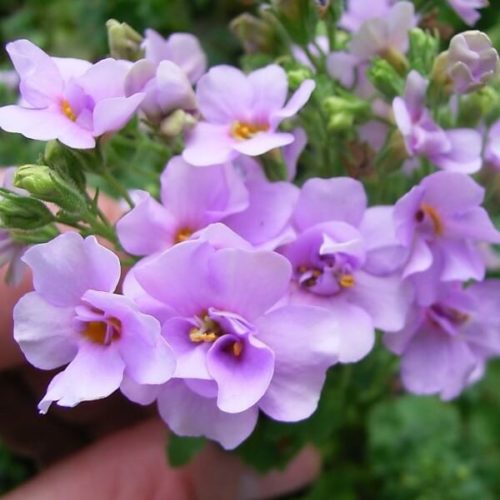
- Fragrant flowers - tubular or bells, externally resemble miniature stars. Color color, depending on the variety, can be white, blue, purple, pink or yellow.
- Bacop flower does not need to remove the blurred inflorescences, they fall independently.
- Perennial culture in the cold regions is grown in open ground only as an annual plant. A variant of wintering perennials in the warm room is also allowed.
- Buckop is considered an unpretentious plant with high aesthetic qualities.
- The life life of the flower is not very long, but the rapid and simple reproduction with interest fills the problem.
- Bakopa can be grown both at home and on the flower bed (in the open soil).
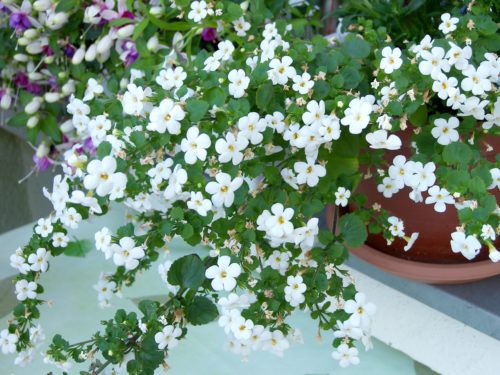
Buckop: Plant Application
- Bacopa plant is one of the best jewelry used in the decorative arrangement of balconies, facades, terraces, flower beds and even aquariums. Especially spectacular flower looks in a period of flowering when the magnificent bushes in the literal sense of "robbed" with small bright flowers and bootons.
- The field of decorative flower growing is particularly popular ampel baking, grown in suspended porridge, flower pots, original baskets or high vases.
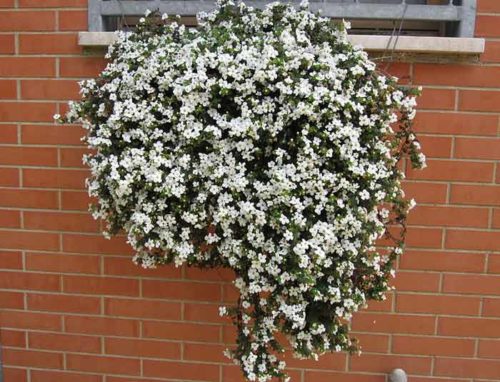
- Speeciously look at the landing of bacaps with chrysanthemums, petunias, nasturtiums, fuchsia and other bright colors. May be planted on the Alpine slides and flower beds as a soil industry. The plant is pretty quickly growing and forms a solid blooming "carpet".
- Bacopa is used by designers as an independent bright accent and as a background plant, focusing on other blooming cultures.
- If you send a branching type of bakopa by support, the culture will quickly "turn" the necessary site. This decorative perennial ability is successfully used for vertical landscaping.
- A clasp plant is suitable for a cut, for use when designing bakery compositions. At the same time in the water flower retains its decorativeness for quite a long time.
- Water varieties of bacaps allow culture from any natural reservoirs or pools.
- Bacopa Monie is considered a medicinal culture that improves memory and brain activity.
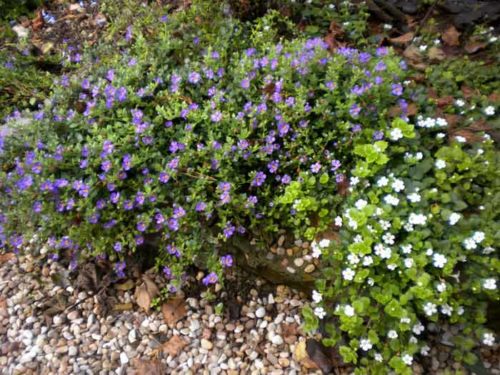
Bacopa varieties and varieties
Floriculture uses derived hybrids, with lush designer bushes, abundant and long blossom.
The most common and popular varieties of cultural bacapap are:
- Blopia "Blutopia" (Bluetopia)
Perennials with shoots, up to 30 cm long. Color-lilac colors. Flowers grade abundantly and long. Unpretentious and overlapping herbal culture.
- Bakopa "Carolinskaya" (caroliniana)
The moisture-loving plant, reaching in a height of about 30-40 cm. This type belongs to the form of bacapaps of aquarium and can grow even under water. Drops thickened stems are thickly intertwined, with rubbing make a pleasant smell of lemon. Flowering continues all summer, small flowers, blue or blue. Sorts are planted near water bodies and ponds, in aquariums; In the cold time they translate "to wintering" into the warm room.
- Bakopa "Monie" (Monnieri)
The dosage variety of buckopes is used as well as a decorative flower for decorating balconies, aquariums and street vases. Succulent variety is characterized by creeping stems, oblong seating leaves and flowers with a blue, pink or white wedge.
- Buckop "Utopia"
Ampel hybrid variety of bakaps used for landscaping facades, balconies or fences. The length of the stem is about 60 cm. Flowers are small, gentle blue color. Unpretentious hardy variety.
- Buckop "Snowpathe"
Hybrid variety with miniature snow-white flowers. Buckop is popular among landscape designers and used for landscaping terraces, loggias, etc.
- Bakopa "Giant Snowflake" (Giant Snowflake)
Large grade with a stem length of about 90 cm. Leaves small, green. Flowers are larger than other varieties of bakaps, white color. Flowering long and abundant, resembling a "white waterfall". The plant looks effectively in suspended baskets or cass.
- Buckop "Blue Avalanche" (BLUE AVALANCHE)
Ampel baking with drooping stems and gentle bluish-lilac flowers. Used as pot culture.
- OLYMPIC GOLD BACKOP (Olympic Gold)
A distinctive feature of the variety is the color of the leaves - the golden, giving special decorativeness to the bunchy bushes. Snow-white flowers of medium sizes, bloom long and abundantly.
- Buckop "Vasilisa"
The variety is characterized by a beautiful, gentle purple color of flowers. Suitable for decorating balconies, facades, alpine slides and flower beds. In length, the twinkling stem reaches from 30 to 60 cm.
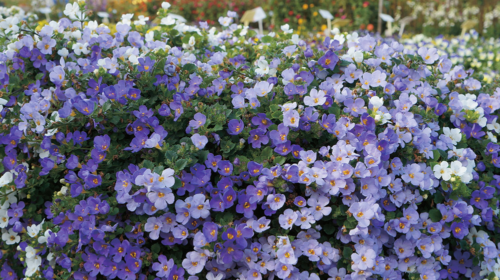
Features of planting bakaps
- Bacopa is grown mainly by the ever.
- When do you need to sow baking on seedlings? The optimal period of sowing is the beginning of March of the month. If seeding seeds start in February - additional lighting should be provided with seedlings (shower).
- Pacopa seeds retain the germination of no more than 3 years. Therefore, when buying seed, it is important to pay attention to the date of packing seed.
- As for the soil, Buckop prefers loose, wet, low acidity, soil. The appropriate soil for the sowing of the panopa will be a mixture of peat and garden land (in equal parts). You can also add a little wet compost. When boarding the seedlings of bacaps in Kashpo, there are still sand and humus (2 parts) add.
- Before sowing, the soil is recommended to hide in the oven at a temperature of 80-90 0Since 4 hours. Such a "simple" reception disinfects the soil and kills the disputes of causative agents of diseases and pest larva. Do not increase the calcination temperature, in order not to destroy and the useful microflora of the soil mixture.
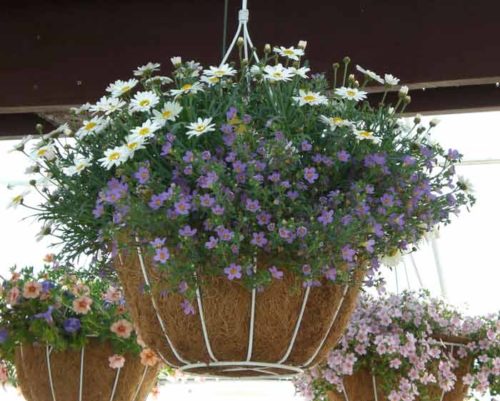
- Floral porridges and pots are placed on the sunny side, as the shadow of the bushes are pulled and lose attractiveness. The ideal option is an open sunny area, slightly signed in a hot noon.
- For aquarium types of buckopes, special fluorescent lighting lamps and large sand (or small pebbles) are used as soil.
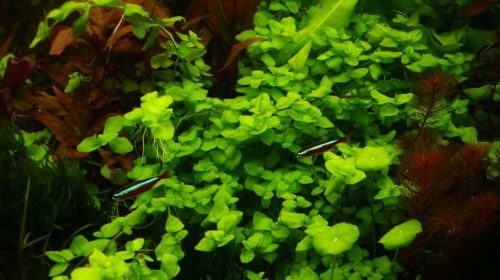
- If we grow baking as an ampel plant, there are special supports or a grid when landing, which will be "brazed".
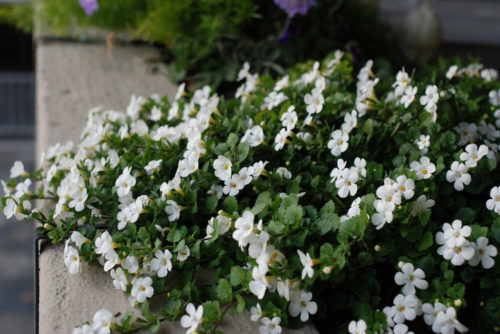
Agrotechnology landing seeds bakopa
The key to successful cultivation of bacopes is the correct selection of landing space, preparation of high-quality soil, ensuring a drainage layer and a biase dive of seedlings.
- A drainage layer is stacked on the bottom of the planting container or flower pot of the moisture. Large river sand or fine crushed stone is suitable as a drainage. The lack of drainage can be attracted to the appearance of root rot or other diseases of the Neckap.
- Before sowing, the seeds of bacaps are soaked at 20-30 minutes in a weak solution of manganese-making for disinfection.
- Sowing seeds, bacaps are superficially, i.e. Without covering the soil, but only a slightly rambling. The seeds of the Bacopa are very small, growing up in light, so there is no need to deepen them into the ground.
- The seed container is covered with glass and leave in a light warm place, providing periodic soil moisturizing (sprayer) and ventilation of the "mini-greenhouse". Recommended room temperature - about 20 0WITH.
- After about 2-3 weeks, the first shoots appear. Then the glass coating is removed, and too thick germs thinned.
- For the successful development of seedlings, it is necessary to monitor that the soil was wet all the time, and seedlings received a sufficient amount of nutrients. The first feeder is carried out 2 weeks after the appearance of germs, after which they repeat the procedure every 10-15 days. Fertilizers must include elements such as phosphorus, potassium and nitrogen. Experienced flowers recommend alternating organic and mineral fertilizers.
- Seeders watered carefully, drip, not allowing soil drying. In this case, the excess of moisture is also undesirable: it can lead to the reinforcement of the roots of the plant.
- In the phase of development of 3-4-level leaves, the seedlings for the first time is picked by separate containers (for example, cups). When transplanting it is important to preserve the natural commercial seedlings, without damaging his fragile roots. Then the seedlings quickly and successfully arrive at a new place.
- For landing, it is best to use transparent plastic containers in which it is easy to control the humidity of the soil.
- The second pickup is carried out already at a permanent landing site (flower bed or flower container). Pereparing the grown and strengthened bushes of bakaps, blowing them into the soil on one interstice. Such a reception will allow the plant to form additional roots, which means faster to root and ensure in perspective abundant bloom. To stimulate bushes, the tops of seedlings are pinching.
- Plant seedlings with an interval of at least 10 cm between individual instances. The landing frequency directly provides the future decorativeness of the plant.
Agrotechnical landing of cuttings (molding)
- Requirements for the conditions for planting rooted cuttings are the same as when sowing seeds to seedlings.
- Cuttings or chains are planted into the ground, in the prepared wells, according to the principle of rescued seedlings.
- Perennial culture, bacon, is characterized by a short life, the poet for the second year old plant is no longer planted. It will not have an initial attractive appearance. The uterine plants are updated, separating it on the cuttings, followed by rooting the latter.

Growing bacaps in open soil
- Having planted baking in open ground, seedlings begin in advance (in 2-3 weeks) hardening. For this, seedlings are gradually placed in conditions with a lower temperature, bringing it to 15 0WITH.
- Such preparation will strengthen young plants to the conditions of open soil, and in the second half of May, seedlings can be planted on the street.
- Place for planting apartments should be selected taking into account the preferences of the harmonious culture: light half and moistened soil (optimally - near the reservoir). A large shading can provoke stretching, the thinning of shoots and the deterioration of the Bacopa blossom, the open sultry sun on the contrary, too "dried" hygrofit.
- Spassing Bacapots on a flower leaf recommended by observing the interval between plants - at least 20 cm.
- In the case of return freezers and lowering the temperature below 10 0C, - Planting Bakeaps is covered with a film.
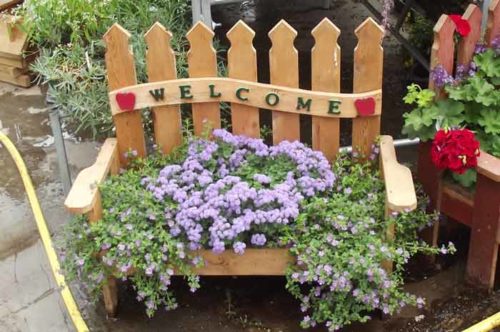
Bakopa, plant care
The conditions of cultivation of baking are not particularly difficult and complexity. More attention should be paid to young copies, which after rooting and further development in a permanent place will become completely unpretentious and endless plants. It is enough to perform standard agrotechnical techniques so that the flower grows with a spectacular flower bush.
For warmth and light-loving culture, a plot is best suited, without drafts and gusty winds, with scattered, but at the same time, sufficient sunlight.
Watering and loosening bacaps
- Moofly busy culture, bacon, responsive to regular moderate watering.
- In a hot, dry period, the plant is watered twice a day: in the morning and in the evening (after sunset).
- During the set of deciduous mass, additional spraying of Bacapi bushes, conducted as twice a day, is recommended: in the morning and in the evening. When the first buds appear - the spraying is stopped.
- Periodically, the soil near the Bakopa is loose, but not deep, given the surface root of the roots of the plant.
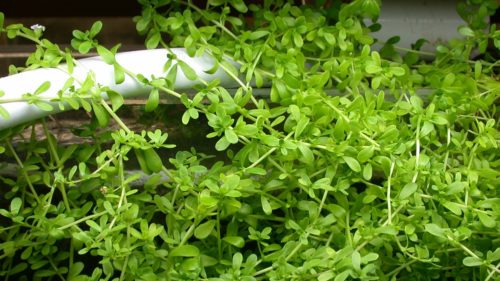
Undercalinka Pacopa
- Making feeding and fertilizer will allow you to grow a healthy lush bush with a massive green mass and an abundance of inflorescences.
- As a rule, liquid mineral complexes containing nitrogen, potassium, magnesium and manganese are used as root feeders. Alternation is also allowed with liquid organic fantasies (cowboy or bird litter solution).
- It is usually only a young, growing plant (1 time in 1.5-2 weeks). Adult copies do not particularly need additional nutrition.
- Make feeders need carefully, under the root, not falling on the leaves and thus avoiding their burns.
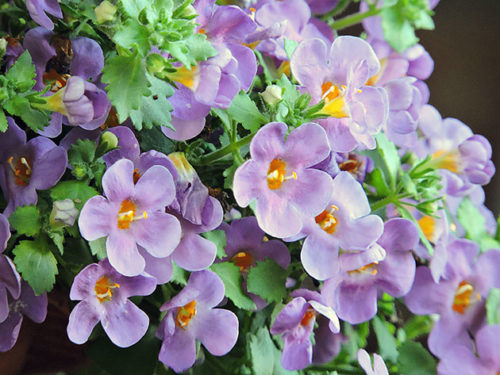
Pipping of bacopa
- In order for the chopping chopaps to look more decoratively and spectacularly, pinching young flower shoots. With the help of pinching and trimming of shoots, it is possible to achieve a beautiful bulk spo-shaped form of bacapas.
- Strongly stretched shoots are also cut off, leaving no more than 50-60 cm of their length.
- You do not need dried flowers, they fall on their own.

Zipopa wintering
- Although the bacon and a perennial plant, the cold it does not tolerate and for the winter period requires changing the conditions of content.
- The best option for a long-term cultivation of the Bacopa is its annual update due to young shoots of an adult plant.
- On the eve of winter, the overhead part of the bacopa is cut and enter the flower into the cool room with a temperature of about 10 - 15 0C. In addition to a decrease in temperature, reduce the iris rates and "remove" feeding. In this mode, the period of resting plants. On the eve of Spring (in February - early March), the culture is rejuvenating, separating the cuttings from the overwhelming eggaps. Re-plant an adult bush for the next year is not reasonable, since a two-year-old Bacopa completely loses its decorative charm: the number of buds and leaves is formed a little, the bush looks like "naked" and ugly.
- Some flowerflowers are in no hurry to trim shoots outdoor bacapos, wanting to extend her bloom. For this, the bush for the winter is entered into a warm room and up to the new year enjoy bright and abundant blossoms. After that, the flower pot is placed in a cool place on the "winter hibernation". It is best for these purposes a glazed not heated balcony or loggia. If you leave the flower in the warm room, the risks of the development of diseases and the subsequent plant depletion. If the plant still remains in the warm room, it is necessary to regularly moisten the soil in the pot and provide a baking level of humidity by spraying shoots.

Diseases and pests
- In general, Bacopa is resistant to pests and damage to diseases.
- Incorrect departure conditions (drying or excessively moisturizing soil) may entail the appearance of some diseases.
- Stagnation of moisture and thickened landings provoke the development of sulfur rot. In this case, the affected parts of the plant are removed, planting is thinned, and irrigation norms reduce.
- Occasionally, culture can be amazed and blonde. When the first signs of insects appear (the leaves are yellow and twisted), the plant is sprayed with a soapy solution of the economic soap (every week, 3 times in a row), and if a similar gentle method does not help - processed by insecticides.

Reproduction of bacopa
- Buckop multiplies with seed and vegetative (with the help of cuttings and melting) in ways.
- Seeds of any variety of bakaps can be bought in a flower shop or collect yourself. The seeds in the plant are very small, in the ripening, they are shied on the leaves, retain the germination of 2-3 years. Seeds purchased in the store, as a rule, have a type of dragee or granules, including 6-7 chopos seeds. Such granules do not need to be preprocessing and after sowing give rise to a whole beam of seedlings. Reviews of customers of granular seeds, bacaps indicate a variety of varieties of plants enclosed in such a granule. This means that the grown bunching devices will delight with a variety of motley blossoms.
How and when to sow seeds, see above (in the section "Features of the landing of bakaps").
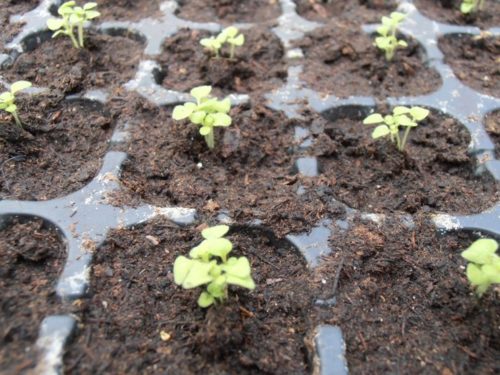
- The simplest and efficient method of reproduction is considered to be shy. The cuttings are harvested in the period from January to April or at the end of summer, when trimming long shoots. To obtain the cuttings, an adult (uterine) plant is needed, from which at the beginning of the spring cuts the most powerful top shoots, 10-12 cm long long. From the cuttings from the bottom knot, leaves are removed and placed in water (or a light humid substrate) for the root formation. Water should change daily. Some flower products are recommended before rooting to handle the cuttings stimulant root stimulant. If the soil substrate is used as a rooting, the cuttings are plugged into one intercourse (the second node must be on the surface of the soil). After 2-2.5 weeks of greenhouse conditions, the cuttings with appeared roots are planted into the ground at a permanent place. To ensure the plant bush and pomp, it is necessary to immediately pinch the top of the shoots.
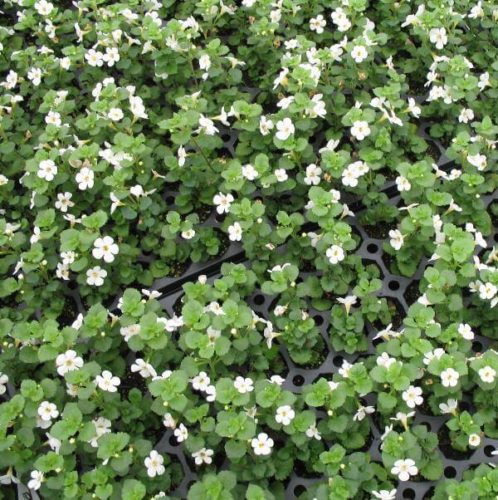
- You can grow a new plant from the adult tapanese jackets. For this purpose, the lower spike shoots are tightly pressed and attached to the soil with an iron bracket. It is more expedient and more convenient to put special boxes with a soil mixture under the bush, in which the chains will be roighted. After the appearance of well-developed roots, shoots separated from the parent plant and plant on a new place.
- Experienced flowers note the best results of rooting cuttings and tanks in white varieties of bakapopa.
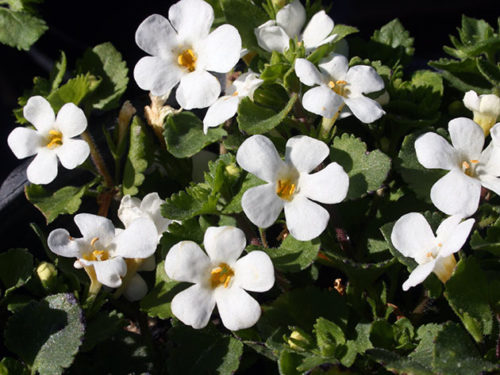
So, if you want to create a real floral "waterfall" on its site or grow a bright and tight "carpet" - you should stop your choice on the landing of the Neckapas.
Rich abundant bloom throughout the warm season, from spring to autumn, will not leave indifferent to any lover of flowers. In addition, Buckop is a very unpretentious plant that does not require special attention and care. Good lighting, regular watering, feeding and pinching of shoots of shoots will provide a lush shape and bright unforgettable perennial blossom.

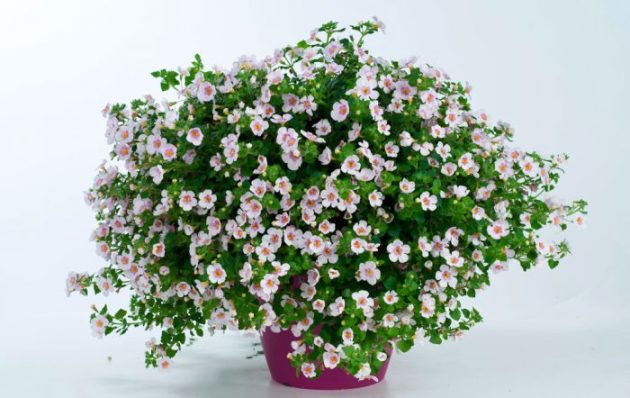
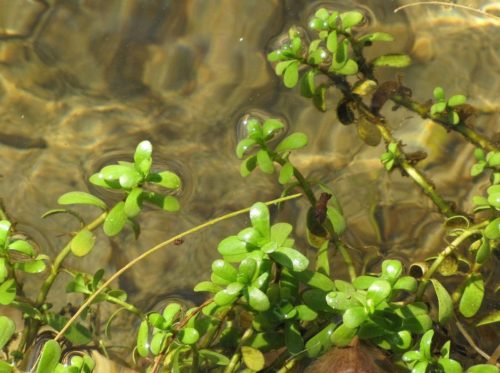
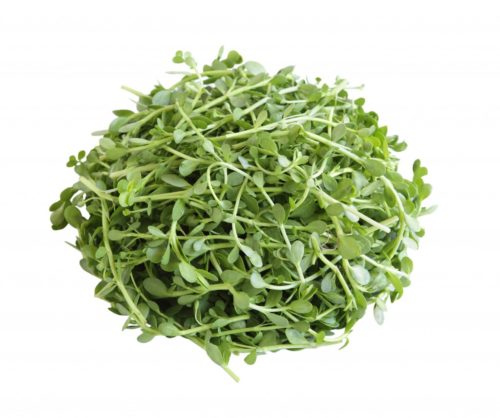
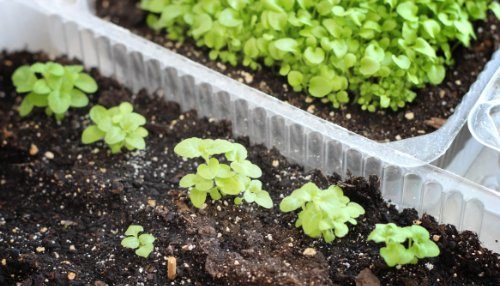
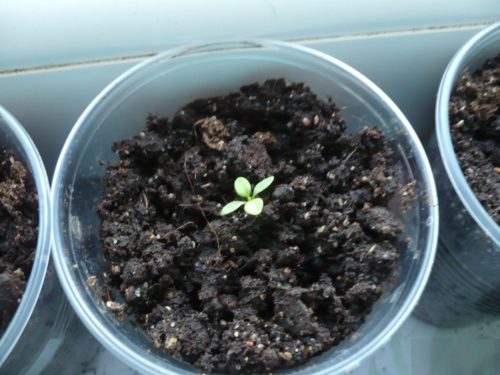
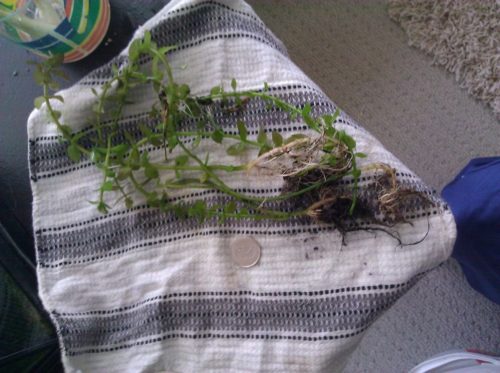

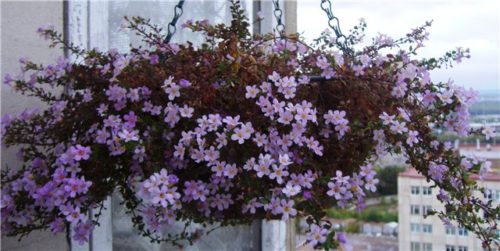
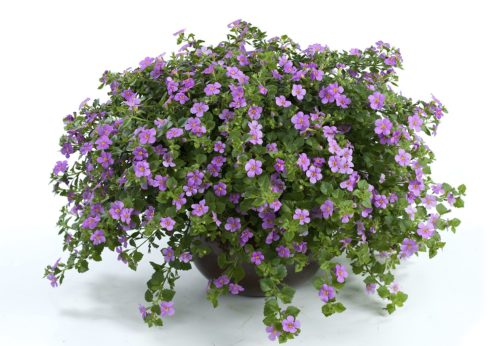
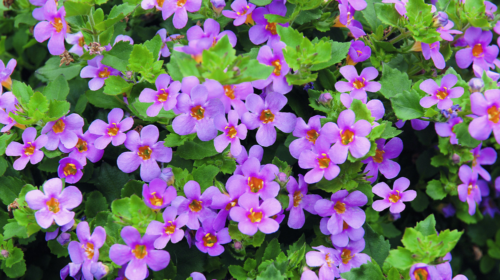
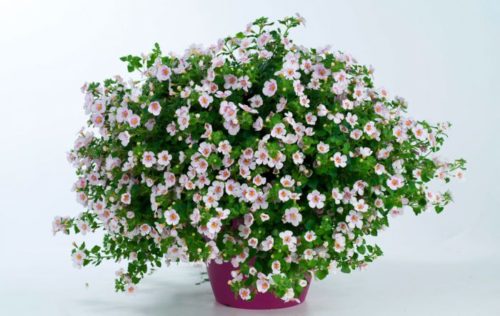
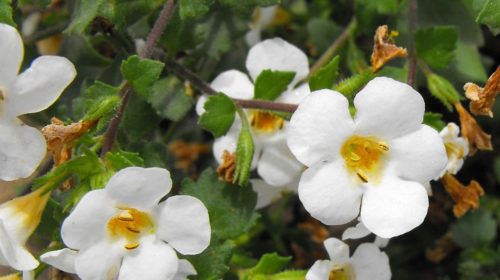
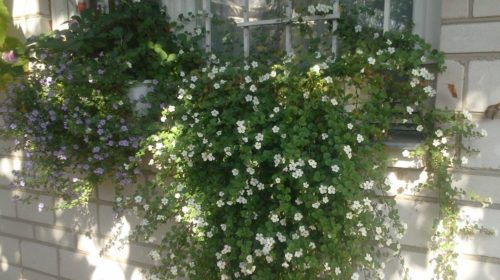
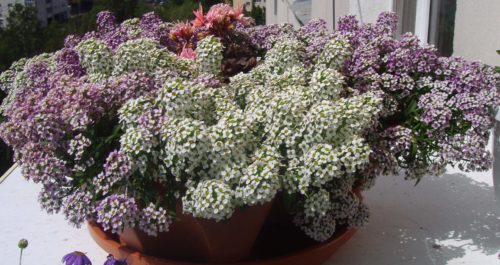
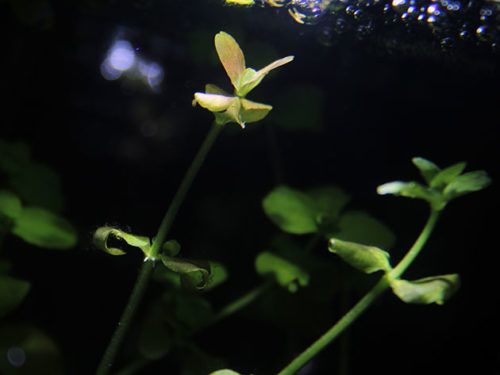

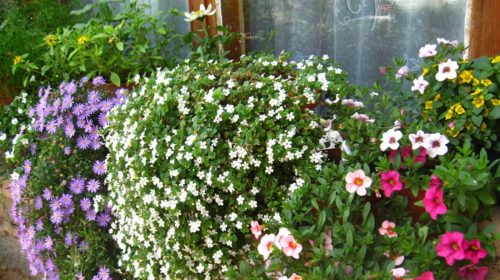
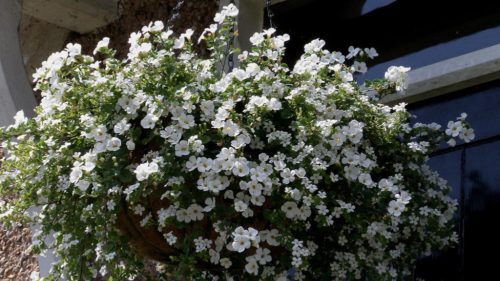
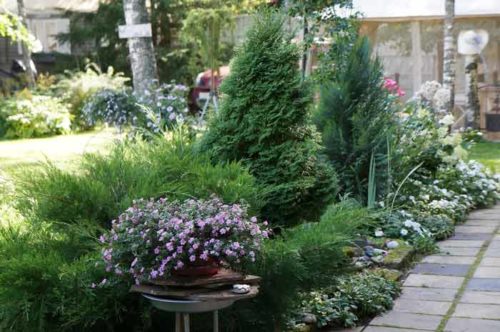












 Start a discussion ...
Start a discussion ...